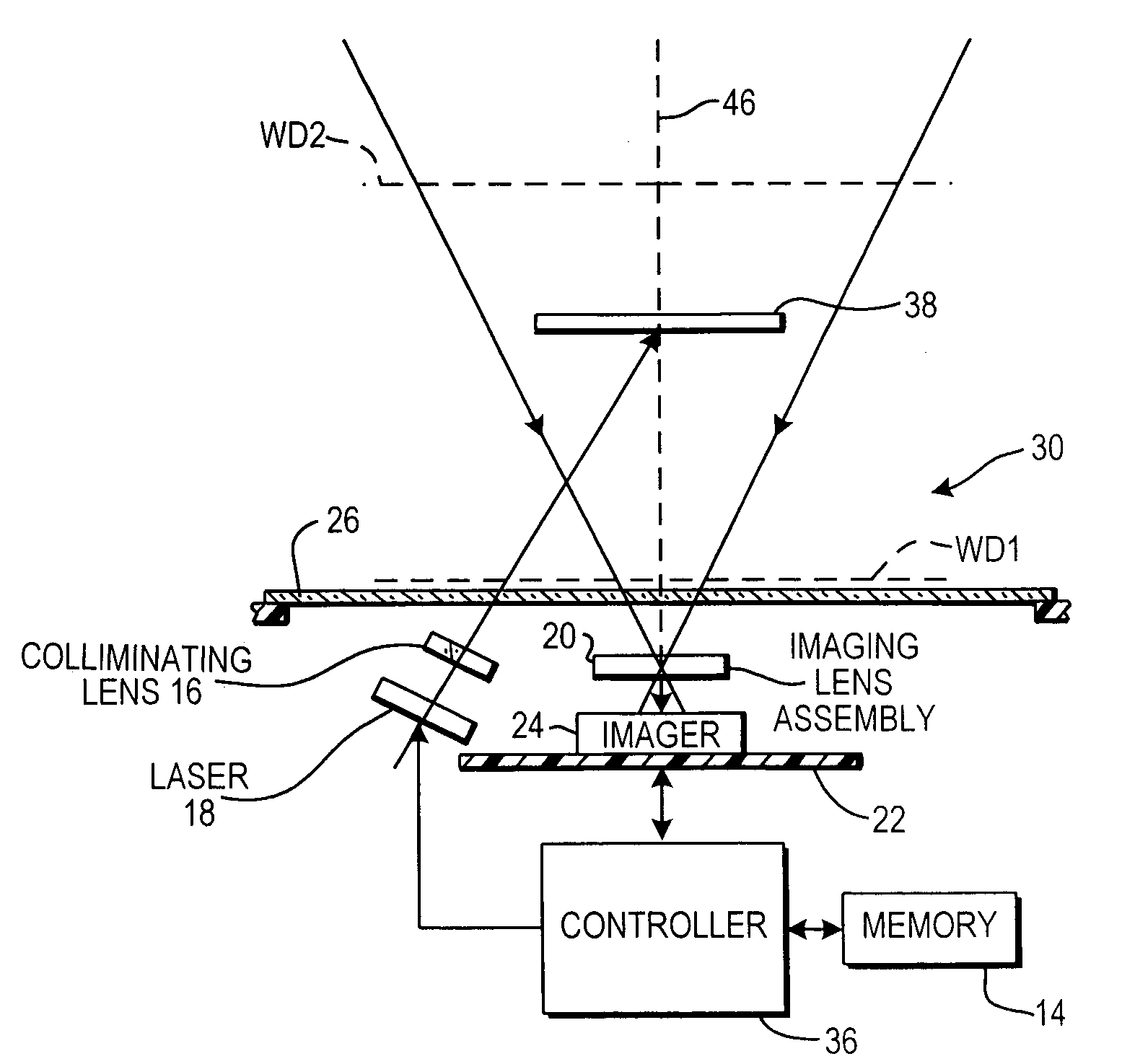Determining target distance in imaging reader
a target distance and imaging reader technology, applied in the direction of distance measurement, instruments, using reradiation, etc., can solve the problems of reducing affecting system performance and reliability, so as to improve system performance and reliability
- Summary
- Abstract
- Description
- Claims
- Application Information
AI Technical Summary
Benefits of technology
Problems solved by technology
Method used
Image
Examples
Embodiment Construction
[0016]Reference numeral 30 in FIG. 1 generally identifies an imaging system or reader having a generally vertical window 26 and a gun-shaped housing 28 supported by a base 32 for supporting the imaging reader 30 on a countertop. The imaging reader 30 can thus be used in a hands-free mode as a stationary workstation in which products are slid, swiped past, or presented to, the vertical window 26, or can be picked up off the countertop and held in an operator's hand and used in a handheld mode in which a trigger 34 is manually depressed to initiate imaging of indicia to be read. In another variation, the base 32 can be omitted, and housings of other configurations can be employed.
[0017]As schematically shown in FIG. 2, an imager 24 is mounted on a printed circuit board 22 in the reader. The imager 24 is a solid-state device, for example, a CCD or a CMOS imager, and has a one- or two-dimensional array of addressable image sensors or pixels operative for capturing return light captured ...
PUM
 Login to View More
Login to View More Abstract
Description
Claims
Application Information
 Login to View More
Login to View More - R&D
- Intellectual Property
- Life Sciences
- Materials
- Tech Scout
- Unparalleled Data Quality
- Higher Quality Content
- 60% Fewer Hallucinations
Browse by: Latest US Patents, China's latest patents, Technical Efficacy Thesaurus, Application Domain, Technology Topic, Popular Technical Reports.
© 2025 PatSnap. All rights reserved.Legal|Privacy policy|Modern Slavery Act Transparency Statement|Sitemap|About US| Contact US: help@patsnap.com



